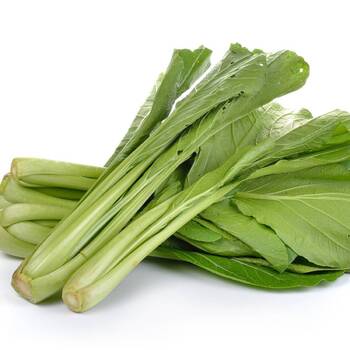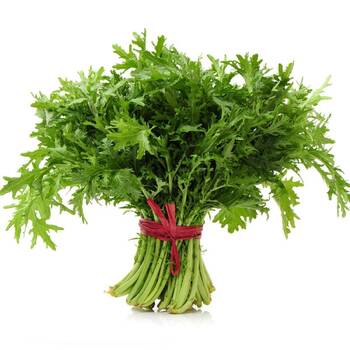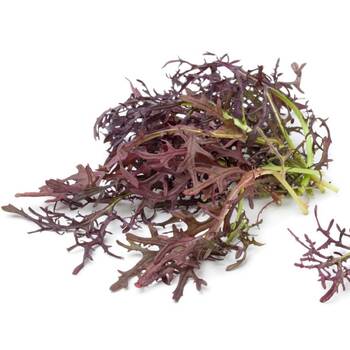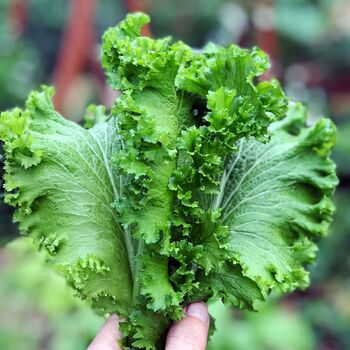
How to Grow Mustard Seeds
Grow Guide #2291
Family: Brassicaceae
Binomial name: Brassica spp.
Life Cycle: Annual
This 'How to Grow' guide details everything a home gardener needs to know to plant, grow and care for Mustard (Brassica spp.).
When to Sow Mustard Seeds
Mustard is a cool season crop. Use the table below to identify the best time of year to sow mustard in your climate.
| JAN | FEB | MAR | APR | MAY | JUN | JUL | AUG | SEP | OCT | NOV | DEC | |
|---|---|---|---|---|---|---|---|---|---|---|---|---|
| Cool | ||||||||||||
| Temperate | ||||||||||||
| Sub-Tropical | ||||||||||||
| Tropical | ||||||||||||
| Arid |
Preparation
Mustard plants are best grown in full sun or part shade. Choose a location that will receive at least 3 hours of full sun each day.
Mustard plants need a well drained soil enriched with plenty of organic matter. Prepare soil by weeding it thoroughly, digging it over to loosen it and adding aged animal manure or compost. Keep the area free of weeds until planting. Learn more about preparing soil for planting here.
How to Sow Mustard Seeds
Mustard seeds do not require any treatment (eg soaking, stratification) before sowing.
Mustard seeds grow best when they are sown directly into the garden.
- Sow seeds directly in the garden 5mm deep and 30-40cm apart, with rows 40-60cm apart.
- Keep soil moist but never wet or dry.
- Seeds should germinate in around 7-14 days at a soil temperature of 18-20°C.
- Young seedlings will need protection from pests, pets and weather until they are established.
Mustard is a cool season crop that will bolt in very hot weather. Unless you are growing mustard for seed, do not transplant seedlings or sow seeds outside in very warm temperatures.
How to Grow Mustard
Mustard plants may need watering during the growing season. Water when the soil is dry about 5cm below the surface (test this by scratching away a little soil with your finger). Water deeply in the early morning or late afternoon. Avoid watering the leaves of plants to avoid fungal diseases. Learn more about watering here.
If soil was well prepared no extra fertiliser should be necessary. In poor soil or to give your plants an extra boost, application of a high-nitrogen fertiliser or one formulated for leafy greens or herbs can be beneficial:
- Apply slow release fertiliser at the recommended rate when transplanting or when seedlings are 5-10cm tall.
- Apply liquid fertiliser at the recommended rate and frequency during the growing season.
Tip: If growing mustard for seed, once plants reach their mature height cut back on watering to encourage plants to produce flowers and seed pods. Do not harvest the leaves.
How to Harvest Mustard
Mustard should be ready to harvest in approximately 30 to 60 days.
Leaves are ready to harvest when they are large enough to eat, and can be harvested as needed. Harvest leaves by pinching off the outer leaves, leaving some on the plant for future growth. Alternatively, harvest whole plants by cutting them just above ground level. Eat mustard leaves as soon as possible after harvesting. Store leaves short term in a perforated plastic bag in the fridge.
Seeds are ready to harvest when the seed pods have dried and turned pale brown. Pick seed pods and crush them between your fingers to release the seeds. Seeds can be used fresh or toasted, added to pickles or used to make mustard condiment.
Common Problems when Growing Mustard
Like all plants, mustard is susceptible to some pests, diseases and other problems. Below is a list of the most common problems gardeners encounter when growing mustard plants:
 Aphids are small (2-4mm long) sap-sucking insects that congregate on the new shoots or the undersides of leaves. They can cause leaves to wilt or become discoloured, and also excrete honeydew which can attract ants and other insect pests. To manage aphids, remove them by spraying with a garden hose, apply a soap or alcohol spray, or encourage predatory insects to your garden. Read more about aphids here.
Aphids are small (2-4mm long) sap-sucking insects that congregate on the new shoots or the undersides of leaves. They can cause leaves to wilt or become discoloured, and also excrete honeydew which can attract ants and other insect pests. To manage aphids, remove them by spraying with a garden hose, apply a soap or alcohol spray, or encourage predatory insects to your garden. Read more about aphids here.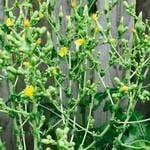 Bolting is when a plant prematurely flowers and goes to seed. Bolting can be caused by a period of extreme weather. Avoid sowing seed until after the danger of frosts has passed or in very hot weather. Water plants regularly and deeply in hot weather to prevent them suffering heat stress.
Bolting is when a plant prematurely flowers and goes to seed. Bolting can be caused by a period of extreme weather. Avoid sowing seed until after the danger of frosts has passed or in very hot weather. Water plants regularly and deeply in hot weather to prevent them suffering heat stress.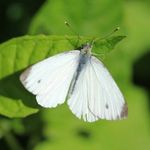 Cabbage moth and cabbage white butterfly have white or grey wings with distinctive markings. They lay their eggs on the underside of leaves. Their caterpillars feed on the leaves, creating large holes and sometimes skeletonising the leaves. Use netting to exclude butterflies and moths or decoys to deter them. Pick the caterpillars off the plants or use an appropriate spray in a selective and targeted way. Read more about cabbage moth and cabbage white butterfly here.
Cabbage moth and cabbage white butterfly have white or grey wings with distinctive markings. They lay their eggs on the underside of leaves. Their caterpillars feed on the leaves, creating large holes and sometimes skeletonising the leaves. Use netting to exclude butterflies and moths or decoys to deter them. Pick the caterpillars off the plants or use an appropriate spray in a selective and targeted way. Read more about cabbage moth and cabbage white butterfly here..jpg) Powdery mildew is caused by fungal spores reproducing on the leaves of plants. First showing as white spots on leaves, affected areas can spread quickly to cover the entire leaf surface. While rarely fatal, powdery mildew can reduce yields. Water plants at soil level (not on leaves) to prevent spreading spores, allow good air flow between plants, remove affected leaves and if necessary spray with an appropriate fungicide or homemade spray. Read more here about powdery mildew here.
Powdery mildew is caused by fungal spores reproducing on the leaves of plants. First showing as white spots on leaves, affected areas can spread quickly to cover the entire leaf surface. While rarely fatal, powdery mildew can reduce yields. Water plants at soil level (not on leaves) to prevent spreading spores, allow good air flow between plants, remove affected leaves and if necessary spray with an appropriate fungicide or homemade spray. Read more here about powdery mildew here.


.png)



